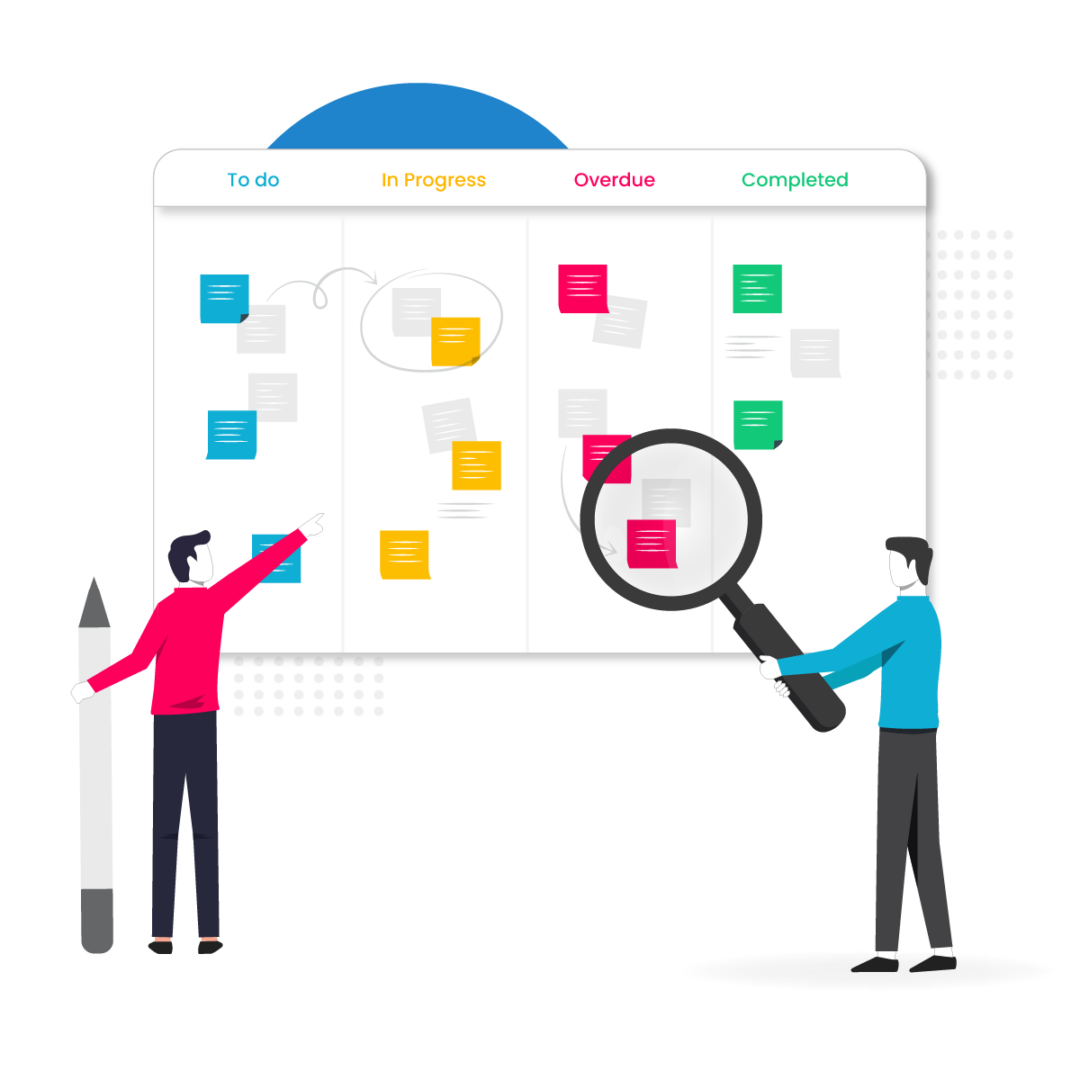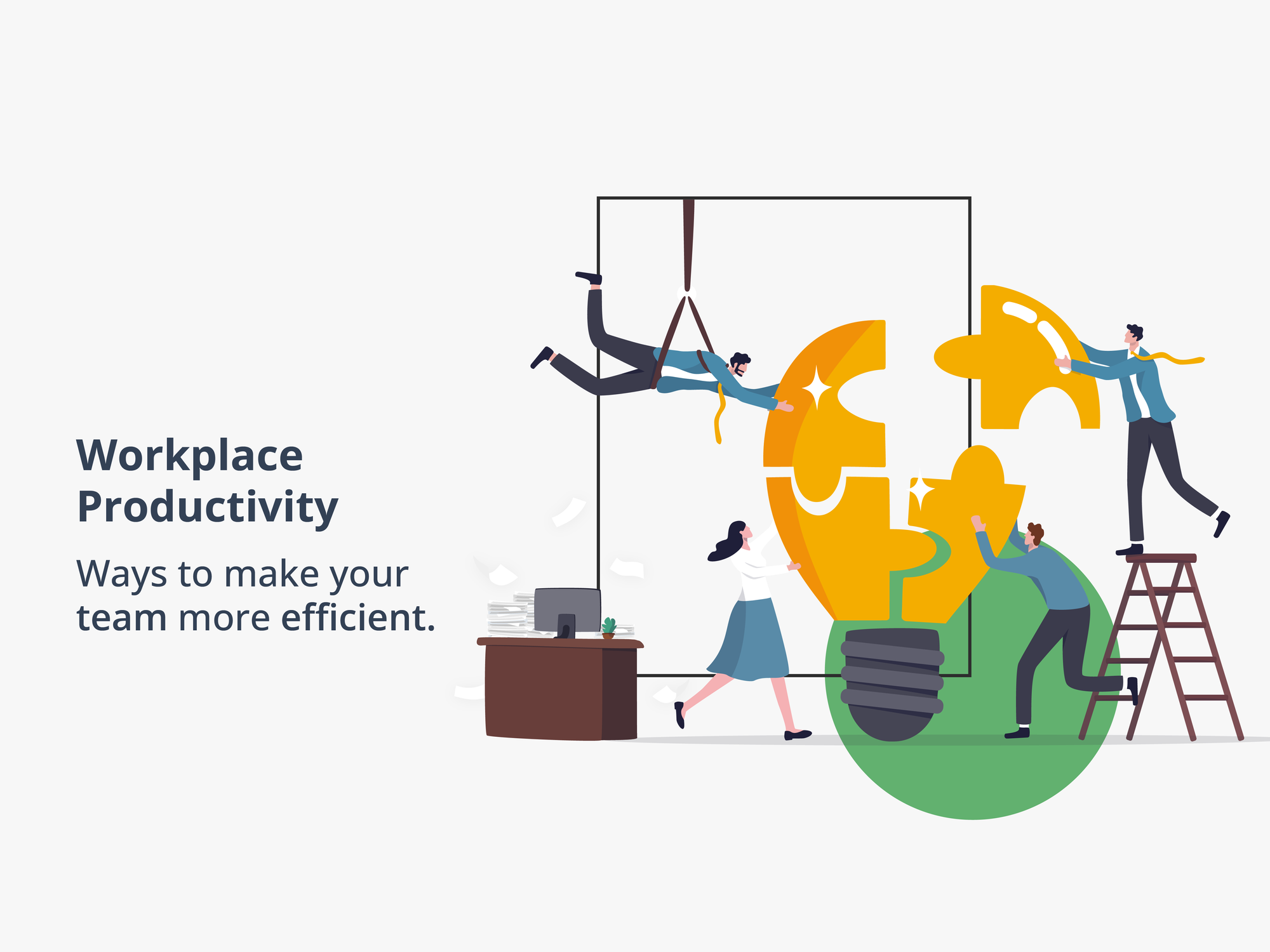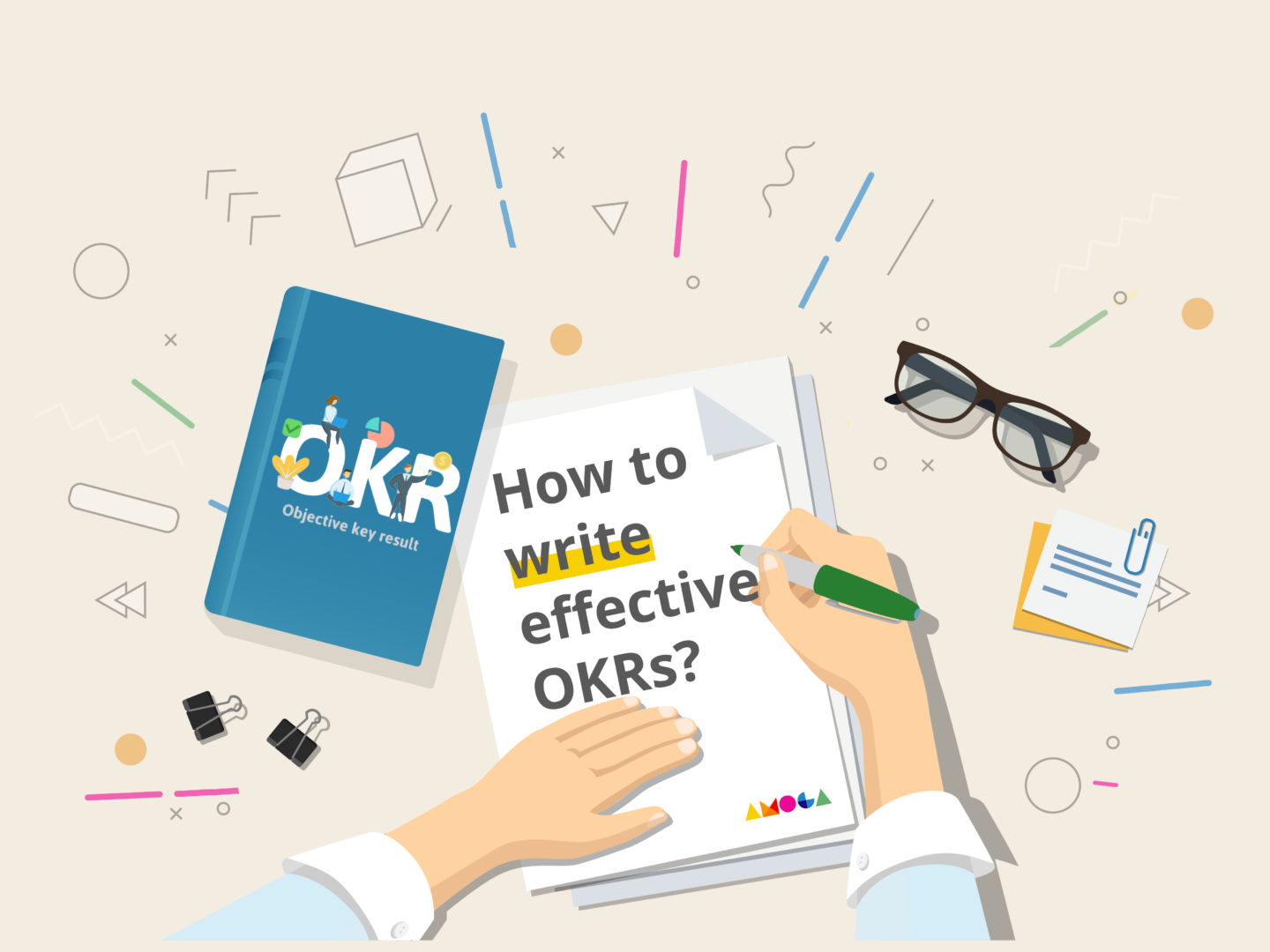Did you know that switching tasks in-between can also kill your productivity up to 80%? Don’t worry!
Continue readingHybrid workplace model and how it enhances workplace productivity
Recent report by Accenture 83% of the surveyed employees say they prefer a hybrid workplace model — in which they can work remotely at least 25% of the time. While the employees prefer it, so do the companies.
The pandemic brought about a paradigm shift across the world in the way businesses operate. From work cultures, work models, productivity enhancement, performance management to work hours -in these changing times everything has been approached with a different point of view as businesses were forced to shift to work from home models.
As everyone tried, tested, and adopted different methods to maintain business continuity, they were continuously ironing out the challenges brought about by the sudden change and designing work processes to ensure optimal productivity levels.
While many industries still struggle with inefficiencies brought about by the shift, most others have settled into a work model that used to be termed as the “future of work.”
As the pandemic catalyzed this transformation journey, a flexible working business model also known as the hybrid workplace is becoming the norm for many industries.
What is a hybrid workplace model?
As the pandemic pushed countries into lockdown, the hybrid workplace was the only option most industries had to maintain business continuity. From this arose a ton of challenges, most of which resulted in lower productivity.
Some challenges faced by organizations when following the work from home model –
- Lack of work environment for the employees and distractions
- Network and electricity dependency on localities
- Lack of office facilities
- Increase in IT issues and resolution times
- Intra and inter team collaboration
- Time management and work-life balance
- Lack of motivation
- Time zone differences
Most of these challenges directly affected the productivity of the overall business. Although, the model also had its own set of advantages –
- Savings in business expenses related to rent, overheads, facilities, maintenance and more.
- Savings in employee’s expenses and time otherwise used to commute.
- Employee independence to maintain flexible work hours.
- No constraint for businesses and employees’ when recruiting and applying for relevant job roles.
As time progressed, companies identified and resolved all concerns that arose as the model was implemented. While some teams performed better while working from home, some performed better when working from an office setup. This led to the concept of hybrid workplace model.
A hybrid workplace model has been defined as a business model combining remote work or work from anywhere with work from the office.
This combination differs from company to company, while some would give an option to all their employees to split remote work and office work within the week, others would split the workforce into core team members that are required in the office and the rest continue to work from anywhere.
The decision is usually based on the industry, nature of business, and their employees’ preferences.
Future of work: Hybrid workplace
Recent report by Accenture 83% of the surveyed employees say they prefer a hybrid model — in which they can work remotely at least 25% of the time. While the employees prefer it, so do the companies.
The same report also finds that 63% of high-growth companies have already adopted a “productivity anywhere” workforce model or the flexible work model.
Not only is the hybrid workplace a preferred model by many employees, but recent research by Wakefield proves that employees are positively averse to going back to the traditional on-site workdays.
The research shows that almost half (47%) would likely to look for a job if their employer does not adopt a flexible or hybrid working model.
As the hybrid workplace model establishes itself for the long run, HR (Human Resources) teams across industries must gear up with relevant policy changes, company culture shifts, training, and onboarding processes, and so on.
The hybrid model is here to stay and some of the major advantages that can be leveraged are –
- Work-life balance
Hybrid workplaces give employees the flexibility to choose where to work from and adjust working hours depending on their personal commitments. For employees who are caregivers, a flexible work model helps them split their time effectively ensuring optimal productivity at work and ample time with the family.
A complete work from home model robs employees of the chance to coordinate and collaborate effectively, reducing productivity. This in turn requires employees to stretch work hours in order to maintain their productivity levels and meet deadlines. The hybrid workplace essentially helps maintain work-life balance as it helps overcome this challenge. - Flexible work hours
Preferred work hours are different for each employee – while some prefer working early in the morning others may not. The early bird vs. night owl debate is a long and old one. Flexible working hours – specifically in a hybrid model where the employees have the freedom to choose from where they would like to work, is a win-win for all.
As long as the employees have considerable overlapping hours, collaboration and coordination will not be affected. Every employee’s productivity level can be expected to improve if given the choice of working hours and place. - Hiring across geographies
Since work from anywhere allows employees to choose from homes, vacation destinations, offices, and co-working spaces, companies have the liberty to widen the pool of applicants to search for talents from across geographies. This is a major constraint for aspirants across industries.
Most applicants look for opportunities in certain geographies or have to relocate in order to match their requirements. For many frontline workers, this is still a constraint. However, for those who have the liberty to shift to a hybrid workplace model, this is an opportunity that proves to be a win-win for both the company as well as the employees. - Improved coordination and collaboration
Coordination and collaboration among team members is achieved best when the team is working out of an office space that houses all the team members making them easy to contact. Although, this is a scenario that is not possible – regardless of the pandemic situation – for most multi-national organizations.
As employees come together to form closer bonds when working from the same site, their offshore counterparts tend to lose out on the coordination affecting work quality and productivity. Shifting to a hybrid workplace ensures all the employees are on equal footing.
This ensures conversations and meetings are necessarily moved on to a virtual platform and reduces the chances of offline meetings and conversations – improving overall team coordination and collaboration. - Cost efficiency
Moving to a hybrid workspace means companies need not build workplaces with full employee capacities. The cost of providing facilities to all employees including rent, overheads, pantry costs, and much more is high, and reducing it to a fraction of the workforce without losing the workforce is a cost-efficient alternative.
As per this McKinsey article, companies can reduce their real-estate costs by almost 30% by moving to hybrid workplaces. The cost-efficiency extends to employees who can reduce their commute time and costs as well as ancillary costs; like hiring help for home management, daycare expenses etc.
To adopt a hybrid workplace, companies need to evaluate their current working models, collect feedback from the employees, analyze the pros and cons, and initiate a change management program to successfully implement the desired working process.
Looping in employees, understanding their preferences, and ensuring their satisfaction should be the goal as it directly affects the company culture, productivity, and employee turnover. Leverage digital solutions like a low code platform that help ensure the workforce is virtually connected and happy.
Check out Amoga, a low code platform where employees can engage, work, and grow. Amoga simplifies, automates, tracks work and goals progress, all in one place, enabling your workforce to work from anywhere: resulting in higher employee engagement and productivity.
Benefits of a work management system
Basically, work management is a strategy that solves concerns like, “How to solve teamwork problems? How to manage stress at work? How to improve the operational processes to achieve business goals?”
Continue readingHow to increase employee productivity
Jordan Cohen, a productivity expert, says, “In today’s complex and collaborative workplace, the real challenge is to manage not just your personal workload but the collective one.”
But why is productivity important in the workplace?
When a company is productive, it increases profitability and lowers production costs, which endorses proactivity and talent. The more productive a workplace is, the easier it is to establish organizational growth and create a healthy work environment.
Now the question is, what is the secret to employee productivity?
No worries!
Here are a few ways to make your team more efficient in workplace.
Ready to start?
How to enhance employee productivity
To help you cut through the noise, here we’ve selected some work productivity techniques to make your team more efficient. However, let us tell you, this is not all. Here are some practical tips to increase the productivity of your employees –
- Align daily work to goals
A lack of strategy can kill your company. According to a study conducted by Clear Company, only 14% of companies have employees who understand the organization’s strategy, goals, and objectives. For individuals and teams to be effective, one of the key actions is to set clear goals aligned with the company’s business objectives that are being pursued. And the employees who have clarity on how their work fits into the company’s bigger picture tend to be more accountable and perform 2x better than before.
In this sense, it is worth exploring the OKR (Objectives and Key Results) methodology that connects employee growth with a common goal and ensures team alignment by eliminating information silos. The idea behind OKR is to align daily progress with the overarching purpose and measure the outcomes at the end of the quarter to analyze whether the objectives are met or not. Furthermore, the OKR also helps to create alignment through cross-functional OKRs by imbibing a sense of collaboration and improving employee engagement. This way, companies can ensure that overall objectives are achieved, and outcomes are tracked timely.
Amoga goal management is a powerful goal setting and performance enhancement tool that helps to prioritize the company’s goals and employee growth by bridging the gap between strategy and execution. Ultimately, we assist organizations in building an agile system resulting in increased productivity. - Work simplification
Everyone here is well aware of the term ‘micromanagement’ in the corporate world. But how many of you know about ‘micro productivity’?
Well, micro productivity is nothing but a process of breaking down large, complicated tasks into smaller sub-tasks, so that anyone can accomplish their to-do list items quickly and improve productivity. This way, the complex work is simplified, and the sub-tasks can be accurately tracked independently in well-defined chunks.
Similarly, at Amoga, we simplify the work by breaking the dreaded tasks into simple atomic tasks and unify work in a single platform along with the process guides (Instructions, training material) for each sub-task. Ultimately, this process guide acts as a guidebook for employees through which they can start performing instantly from the day of onboarding.
The benefits of simplifying complex work are –
- Helps reduce work stress and lessen the workload by clearly understanding work priority and what part of the task needs to be completed.
- Enables us to identify blockers pre-emptively and reduce the risk of last-moment error because of unplanned work.
- Prioritizes team efforts more effectively based on the information captured in a single visible platform.
- Gamifying work
For decades, work has been considered the most mind-numbing activity that every human is forced to do to survive. But, with digitization, ways of working have changed, and employers have started believing that “Gaming Can Make a Better Workplace.” Moreover, this belief kickstarted when the pandemic happened in 2020, and most companies adopted a hybrid/remote working model.
Gamification of work is a process by which you can gamify the work and transform the work environment into a fun culture by enhancing the employees’ learning phase and motivating them to complete the projects with ease. Through work gamification, organizations can boost employee engagement and keep them motivated in the workplace.
Now, the question arises: “how to gamify the work?”
At Amoga, we have gamified work with –
- Levels
Usually, all games come with levels and with a set of defined missions or storylines. Similarly, here we present growth and work progress in levels to drive employee engagement and productivity. These levels act as an indicator of reaching a milestone. Once you complete one, you get access to the next one, but with a bit more challenging storyline. This brings curiosity and desire in employees to achieve/conquer and keeps them motivated in their work and in the workplace. - Scorecards
Scorecard gives your employees a clear path to success. By breaking down work into daily efforts – like the number of new calls to make each day or the number of follow-ups to do every day – your employees know they must hit “100” on their daily output to stay on pace. This way, they learn on their own precisely what they need to do to achieve their outcome and this motivation matters most.
Moreover, the add-on bonus here is that through the Amoga’s scorecard, managers/team leads have real-time visibility of each employee’s performance – who’s on track and who needs guidance and training as we present a system of accountability.
- Levels
- Workflow Automation
According to time management statistics, 20% of the average workday is spent on “crucial” and “important” things, while 80% of the average workday is spent on things that have “little value” or “no value.”
For instance, you all must have faced a situation where productivity seems to lag as you continuously struggle to manage time. That is because you might be spending significant time doing recurring tasks like responding to emails or backing up data. And this is where automation can help you by improving workplace productivity. Workflow automation is the ideal solution that leads to growth and improves workplace productivity in many ways.
One of the main benefits of workflow automation is that it reduces the repetitive manual process and lets you focus on other essential tasks. Indeed, this solution allows to –
- Eliminates repetitive manual processes and associated costs, resulting in improved profitability.
- Helps your employees get their work done promptly and takes advantage of the time saved to focus on more critical tasks.
- Optimize operational processes through more synchronous and dynamic communication between employees.
- Easily generate reports through collaborative platforms and share them between collaborators; this ensures more harmonious collaboration and more efficient use of data. Promote the rapid and efficient creation of reports.
- Automated document generation with the help of workflow automation tools not only saves valuable time and effort but also prevents you from manual errors, which enables a better decision-making process. As a result, you can reduce the time spent and errors associated with manual processing.
The Key takeaway
As you can see, each of the components of the people management system is a strong lever in itself. But when they fit together into a cohesive strategy, they create an excellent team that drives the company to achieve its business goals.
Simple tools like workflow automation software can help everyone on your team become more efficient, even if it seems overwhelming. And as you and your team become familiar with these technologies, efficiency will become second nature and an integral part of any project.
Digital Workplace with a Human Touch: Make your workplace more human-centric
The pandemic has changed people’s lives by unveiling the full potential of digital tools. Some of the features that make up a digital workspace are online collaboration, video calls and remote meetings, document management, and cloud services. This has been a lifeline for many companies to continue operations, but it is still an unexplored path for many others.
Many business leaders believe that implementing the right technology like a low code development platform will transform the business. But the truth is, you cannot rely on technology alone to solve the problems. Technology is just a tool that enables employees to accomplish goals. So, employees must come first while designing a successful digital workplace.
Humanizing the workplace is an essential step towards improving employee morale and retention rate and, in turn, improving the company’s productivity and capacity. Employees who feel connected to their digital workplace are much more likely to exhibit higher rates of morale and satisfaction levels than those who feel dehumanized in their work environment. This is the first and most crucial step towards digital transformation. According to a global survey by JLL, workplaces of the future will be versatile and hybrid, focusing on employee-centric solutions.
What is a digital workplace?
A digital workplace is a cloud-based work platform that allows organizations to work virtually.
Gartner analysts define it as “a business strategy that enables innovative and more efficient ways of working, leveraging worker-centric organizational models and technologies, and improving employee engagement and productivity.”
A successful digital workplace aligns technology, people, and business processes to improve operational efficiency and achieve business goals.
The next step in digital transformation strategy is to focus on employee engagement and provide them with an intentional and crafted digital experience to accomplish their work. As it is no longer mandatory to limit oneself to the office’s physical space to carry out professional activities, organizations need to think deeply about aligning their business processes and employees with technology.
Ways digital workplace helps in making work more human
Thankfully, there are several measures that business leaders can take to create a human-centric digital workplace. Here are some key elements to focus on –
- Trusting employees and encouraging their autonomy
The first step to bringing a human-centric approach to the digital workspace is trusting your employees and empowering them. Since you won’t be physically next to the team, you won’t be able to supervise tasks all the time, and this is where trust is required. If employees are well-associated with their tasks and perform activities with quality, they do not need full-time supervision. In these cases, it is necessary to encourage autonomy and assign responsibilities to them.
Before granting this independence to the entire team, it is essential to know each employee well and understand their level of maturity in the position. For instance, recently hired people may need your supervision more, so their autonomy will not be equal to professionals with more experience. - Keeping lines of communication open
A strong communications strategy based on modern, intelligent delivery systems can help employees feel safe, secure, and connected in a digital work environment. But, with tons of apps now available in communication, it is quite easier to send a quick message than have a real conversation with your employees. IMs and emails can often come off cold and distant or leave the employee feeling like you do not really want to engage with them. Therefore, it is essential to have a more human approach to interaction when possible.
With digital workplaces, you can set up an effective communication channel making it easy for the remote staff to collaborate easily with other team members and keep up to date with business changes.
Moreover, eye contact helps you empathize with employees and see if they understand what you’re talking about! For this reason, at times, you should turn on the camera during team meetings and ask your team members to do the same. - Aligning and engaging your workforce
Keeping remote employees engaged isn’t an easy feat by any means. As most of the employees and managers work remotely, ensuring the same level of motivation has become quite difficult compared to when they are at the office premises. So, implementing OKR here is the secret to digital workplace success.
The acronym OKR stands for “Objectives and Key Results.” As its name indicates, it implies employee career success by allowing employees to focus and communicate more effectively and be more aligned across teams. OKRs assist in organizing teams and their day-to-day work around achieving common objectives. It helps employees connect with their managers or business leaders with increased transparency, improved focus, and better alignment.
Moreover, the OKR framework also helps employees to:- Keep regular track of their progress.
- Increases focus & productivity.
- Elevates employee engagement & commitment.
- Allows employees and their leaders to work cohesively.
- Offering flexible working-hours
It is worth saying that flexible working hours are the key to productivity during remote working. Gartner’s 2020 Reimagine HR Employee Survey revealed that only 36% of employees were high performers at organizations with a standard 40-hour workweek. And organizations that offer employees flexibility over when, where, and how much they work see 55% of their workforce as high performers. When employees are getting the job done, being a business leader, how can you support them and provide the digital workplace solutions they expect and need?
To start, organizations should strive to provide employees with modern digital experiences that enable them to work according to their convenience. Empowering employees with this sort of flexibility delivers significant employee experience benefits and helps them to better manage their work-life balance, improve their wellness and be more productive. - Main advantages of human-centric digital workplace
Now that we comprehend the concept of the digital workplace and the implementation of a human-centric work environment, let us explore the advantages of putting it into practice. - Increased productivity
Adopting the digital workspace will allow your company to rely on more effective processes, generating a positive impact on the entire team’s productivity. Technological advancements have entirely reshaped organizations by streamlining business activities and automating some tasks.
With this improvement provided by the digital workplace, team members will produce more in less time. Moreover, they will be able to leverage these smarter tools to collaborate better. - Retaining talent
Every employee wishes to be valued, and it is common for everyone to like it when superiors express the same. Employees who feel valuable and essential to the company have a great tendency to remain part of it and do so of their own free will. Thus, business leaders now can value their employees, skills, presence, and all the excellent work done in the process using technological tools.
A digital workplace enables businesses to take advantage of technological developments by centralizing information and organizational processes, creating a social network and collaboration platform, thus building a strong employer brand, and retaining talent. - Superior team engagement
Keeping your team members engaged with their activities is very desirable, as it contributes to the efficiency and quality of their deliveries. Although it appears that a digital workplace will make people more distant, the reality is quite the opposite. In most cases, there is an increase in team engagement. It is because the digital workplace facilitates access to learning platforms, making it possible to train your team independently. Moreover, gamification features help to amplify that potential.
Digital Transformation: Its Relevance After The Pandemic
As per Gartner – “Digital transformation or Digitization can refer to anything from IT modernization (for example, cloud computing), to digital optimization, to the invention of new digital business models.”
Continue readingBest practices to measure employee productivity
Measuring employee productivity refers to the amount of work an employee completes in a specific period. It is essential for every business to measure because the company’s success and overall growth depend on its employees’ productivity.
Continue readingHow to write effective OKRs: 10+ OKR Examples
The OKRs have helped us multiply our growth by 10 times. They have helped us to make our ambitious mission to organize the world’s information more achievable. They helped me and the rest of the company meet deadlines and measure what mattered most. – LARRY PAGE, co-founder of Google.
Faced with the success of Google, many companies adopted the OKR method thereafter. So, what exactly is the OKR method?
OKRs stands for Objectives and Key Results. To put it simply, OKR is a goal-setting framework that helps organizations achieve their goals in a measurable way and creates clarity and aligns everyone in the organization towards top business goals to drive better results.
In the book Measure What Matters, John Doerr explains that goals and key results are the yin and yang of efficiency. A goal without key results is just a desire. And key results without a goal are just to-do lists without any output. So, both need to be effective.
When getting started with the OKR framework, it is common to get questions like “what is a useful guide to OKRs?” “how to write a good OKR?” or “how to set measurable key results,” or ” how do I get a good example of a well-written OKR?” To answer these questions, we have created a set of examples on how to set OKRs, so that you can apply them as you start with your own team OKRs.
How should an OKR be?
As said earlier, Google is a benchmark in designing objectives and key results. According to it, the attributes that should characterize OKRs are:
- Quantifiable – Whether it’s a number, date, or percentage, KRs (key results) must be measurable and time-bound, or else they are ineffective.
- Qualified – At the end of the term established for the OKR, you must rate their performance. For example, Google measures the key result completion on a scale of 0-1. It is 0 when “the goal has not been achieved” and 1 when “The goal is achieved.” Since OKRs should be ambitious, getting 1 on each key result is not expected; hitting 0.6-0.7 indicates your OKRs are appropriately ambitious. This way, they rate the progress of their goals, and the results are taken as a reference to formulate the next objectives.
- Public – Within the organization or company itself, OKRs must be public. This way, the OKRs maintain transparency and alignment with every department, enabling early detection of the problem. Moreover, it also builds accountability and a sense of urgency on critical tasks.
- Ambitious – To see the team’s true potential, sometimes it is necessary to set aggressive goals. The team will encounter difficulties and put extra effort into achieving the set goals. Remember, it is better to fall short than to reach the goal without struggling.
10+ Team OKRs examples – Guide to OKRs
Now that you have some insight into the general guide to OKRs, we have shared some OKR examples below for different departments. You can use these OKR examples as guidance and jump-start your own team OKRs.
Marketing OKRs
Example 1
Objective: Create awareness of the launched product.
- Key Result 1: Get 50 product reviews by [date].
- Key Result 2: Launch a paid social media ad campaign by[date].
- Key Result 3: Make three videos of the product for our YouTube channel and social networks by [date].
Example 2
Objective: Bring an incredible amount of new inbound leads to the site.
- Key Result 1: Increase monthly website visitors from 10k to 20k by the end of [month].
- Key Result 2: Increase Domain Rating (DR) score from 45 to 55 in SEMrush by [date].
- Key Result 3: Decrease homepage bounce rate from 75% to 50% by the end of 1st month of Q2.
Example 3
Objective: Improve our website and increase conversions.
- Key Result 1: Increase site visitors by 7% every month (total 21% for the quarter Q2) by [date].
- Key Result 2: Create 10 new lead magnets before the end of the second quarter [Q2].
- Key Result 3: Improve landing page conversions by 10% every month till the end of Q2.
Sales teams OKR
Example 4
Objective: Generate more scalability in sales.
- Key Result 1: Increase the number of leads generated by 80% by [date].
- Key Result 2: Decrease the sales cycle by 35% before [month].
- Key Result 3: Generate more upsell and/or cross-sell by 20% by [date].
Example 5
Objective: Achieve quarterly revenue of 300 million INR.
- Key Result 1: Earn 50 million INR in revenue during the first month of Q2 for a new product.
- Key Result 2: Reduce the sales cycle from two months to 19 days by [date].
- Key Result 3: Sell the new product to 40% of current customers by the end of quarter[Q2].
Example 6
Objective: Offer an excellent after-sales experience for customer retention.
- Key Result 1: Bring the customer satisfaction score above 90% by [date].
- Key Result 2: Reduce request response time to less than 3 days before the starting of [month].
- Key Result 3: Retain the current customer base by 90% before the end of quarter [Q2].
Customer success OKRs
Example 7
Objective: Provide a top-notch customer support experience to increase customer base.
- Key Result 1: Achieve a 90% Customer Satisfaction Score (CSAT) all urgent tickets by [date].
- Key Result 2: Start solving 100% critical issues within 1 hour from the [month].
- Key Result 3: Resolve 95% of medium severity support tickets in less than 24 hours from [date].
- Key Result 4: Each support representative must maintain a personal CSAT of 95% or higher till the end of [Q2].
Example 8
Objective: Ensure proper support to the customer success team members to succeed and achieve company-wide goals.
- Key Result 1: Conduct 2 product training sessions bi-weekly from the start of [date/month].
- Key Result 2: Increase task success rate from 70% to 90% by [ date].
- Key Result 3: Successfully onboard 10 new customers per month till the end of Q2.
Example 9
Objective: Improve QA procedure to leverage the testing processes.
- Key Result 1: Have 85% bug-free solutions by [date].
- Key Result 2: Conduct 4 more test sessions per week with target users by the end of Q2.
- Key Result 3: Decrease testing cycle average time by 50% by [date].
Engineering team OKRs
Example 10
Objective: Improve QA procedure to leverage the testing processes.
- Key Result 1: Have 85% bug-free solutions by [date].
- Key Result 2: Conduct 4 more test sessions per week with target users by the end of Q2.
- Key Result 3: Decrease testing cycle average time by 50% by [date].
Example 11
Objective: Enhance the quality of the product.
- Key Result 1: Speed up the code coverage from 40% to 75% by [date].
- Key Result 2: Reduce the QA rejections per function, on average, from 2.5 to 1 by [date].
- Key Result 3: Lessen the average number of recently reported bugs from 70 to 30 by [date].
Example 12
Objective: Accelerate the development team’s speed to create more value for our customers.
- Key Result 1: Increase sprint speed from 40 to 65 by [date].
- Key Result 2: Reduce the average number of bugs per feature from 3 to 1 by [date].
- Key Result 3: Reduce average lead time by 25% by the end of [month].
OKR Writing Tips
- Define clear and specific goals – While setting OKRs, there should be no complications or ambiguities. The goals you define must be specific, and this also applies to both the objectives and the key results. Then only the team members’ will be able to understand what is wanted and will stay aligned to achieve the goal.
- Involve the team in the creation of objectives – It is crucial to work together while setting the objectives. Therefore, these should not be established only by managers or leaders, but rather the entire team should be involved.
- Establish relatively short deadlines for Key Results – For the process to be manageable by the team efficiently, it is recommendable to set shorter deadlines instead of having such extended deadlines for the achievement. It is best to set reasonable deadlines, for instance, quarterly or semi-annually.
- Assess results constantly – Even if the achievement period is 3 or 6 months, it is good to constantly evaluate the results to ensure the consistency of the work. It can be done weekly, for example, so you can make quick adjustments as needed before moving on.
To Conclude
Writing good, well-structured, and effective OKRs is not easy. Have the patience to run multiple iterative improvement cycles, and you will see what success looks like! Also, you can use OKR management software which facilitates access for all employees to OKRs, encouraging teams’ engagement, motivation, and performance.
OKR vs. KPI: Breaking it all down
For every business to stand firm, every company needs to have clear objectives and well-defined goals. These goals help organizations keep everyone on the same path and motivate employees towards their work. When it comes to setting business objectives and measuring business performance, the two most common acronyms of the business world are OKR and KPI. Let us dive into OKR vs KPI.
OKR stands for “Objectives and Key Results,” and KPI stands for “Key Performance Indicators.” One is about goal setting and execution framework, whereas the latter is a mechanism to define necessary measures to achieve success in an organization. Thus, comparing OKRs and KPIs is like comparing apples to oranges.
However, at times KPIs are compared with OKRs and create confusion as they both are management tools that helps in decision-making. So, in this article, we will explain the core difference between OKRs and KPIs and how you should leverage them in different approaches to get the best results.
What is an OKR?
OKR is a goal management framework born in the mind of Andy Grove, former CEO of Intel, in 1971, to focus the work on the company’s main objectives. However, OKR started gaining popularity since 1999, when John Doerr introduced the OKR framework to the Google founders, who implemented this methodology and delivered tremendous results since then.
To put it simply, it is a way of internally aligning the company’s objectives with each department, managers’, and team members‘ goals, who contribute to the organization.
With this collaborative goal-setting methodology, companies can focus on the critical areas of business operations. Instead of creating dozens of goals and getting lost among them, the OKR framework focuses on a list of 3-5 goals (objectives). Under each objective, a maximum of 3-5 key results are set to measure the employee’s progress towards the objective holistically.
What are KPIs?
KPIs are the key indicators that measures the performance or growth of a company. While the KPIs have a long and illustrious history, the exact date and precise origin of the KPI are still unknown. But it is speculated that the practice of KPIs dates back somewhere to the third century when emperors of the Chinese Wei Dynasty began to rate the performance of official family members.
Coming to the business world, KPIs serve as the business guideposts for many companies. It consists of result-based tracking metrics that evaluate an organization’s performance and how effectively the business is moving towards set goals. Organizations can use KPIs to track the health of the business, projects, programs, or various other company initiatives at the strategic level.
For a business to establish what its KPIs are, you need to conduct an analysis of what it is delivering and how it can be measured. One way to do this is through the Balanced Scorecard (BSC), a methodology that will help you choose the right metrics for your business. Let’s look at some common KPI examples –
Sales –
- Average ticket size.
- Conversion rate.
- Customer lifetime value.
Marketing –
- Traffic on the website or blog.
- Completed leads.
- Interaction in social networks.
OKR vs KPI – Breaking it down for you
At first glance, two concepts resemble one another a lot. Both KPIs and OKRs are methods of setting goals, tracking, and measuring the company’s performance and successes. While both are effective methods, there is a significant difference between OKRs and KPIs. But before that, it is also essential to understand the difference between lagging and leading KPIs.
Lagging KPIs represent metrics that allow you to measure the result – the outcome of our strategy and efforts. It measures how well a business performance or system was managed, such as last month’s profit and loss (P&L) statement, the number of products or services sold, total incidents, etc.
On the other hand, leading KPIs are driven by metrics that correspond with the future outcomes or where you are likely to get to. They measure target values that lead to the performance of lag measures, measuring intermediate processes and activities, such as current ongoing customer cases, percentage of team availability, number of outstanding bugs, etc.
So, the KPIs (key performance indicator) consist of a series of metrics to measure the performance of a process, an area, or an entire company. KPI presents information about the efficiency and productivity of a business. Through KPI analysis, it is possible to determine whether progress is being made in the right direction or any new decisions need to be made to achieve the set objectives. In contrast, OKR is more of a goal-setting framework that aligns company goals with departmental goals with that of teams and individuals and ensures every individual is striving towards a common goal throughout the business quarter.
If we list the differences between OKRS vs. KPIs in a table, it will have something like this –
Examples of OKR & KPI
To better understand the difference between OKR & KPI, let us consider the example below:
The marketing team created a great landing page that delivers product value and converts visitors into great opportunities. Now the commercial team wants to take advantage of this potential page to generate more sales.
The OKR for the marketing team is to evolve their qualified lead generation –
- Key Result 1: Increase monthly site visitors from 4k to 8k.
- Key Result 2: Increase product free trial subscriptions from 320 to 600.
At the same time, the marketing team has a lot of tracking KPIs or metrics to monitor. The KPIs includes are –
- Conversion rate.
- CAC (Customer Acquisition Cost).
- Landing page conversion rates.
- Organic traffic and top 5 entry pages.
- Lead-to-customer ratio.
- Social media traffic and conversion rates.
The marketing team continuously monitors all KPIs based on the business objectives. As the business objectives change, it is necessary to improve KPIs accordingly. In the example above, it is demand generation. It could also be conversion rate, social media followers/comments, time on site, customer acquisition costs, funnel optimization, etc. Based on the tracking of your KPIs and the results of the previous objectives, you can formulate the next OKRs.
Although different, do they work together?
Yes, both OKR and KPI can be used together while planning the company’s strategic goals since the two complement each other and help the company achieve the fundamental goals and serve as a starting point for better employee engagement.
Objectives and Key Results are metrics or measurements that outline the objectives and define the desired key result, bringing some benefits such as –
- Quickly identifies what needs to be improved.
- Involves teams and ensures alignment regarding key results.
- Distributed targets.
- Improve Performance and productivity.
When it comes to KPIs to include in your business strategy, they bring various benefits, such as –
- Measures the health of the business.
- Identifies data and compares them with the expected results.
- More assertive decision-making.
Wrapping up
In a nutshell, OKRs and KPIs work very well together. OKRs help solves problems, improve processes and drive innovation. KPIs help monitor performance, identify problems and areas of opportunity. Thus, it is necessary to know the differences and benefits of OKRs and KPIs and apply them correctly to go beyond expectations. This guide to OKR vs KPI surely will help you understand how both works in a larger scale.
OKR Software Buying Guide for 2022
Objectives and Key Results are the yin and yang of goal setting.
Continue reading








